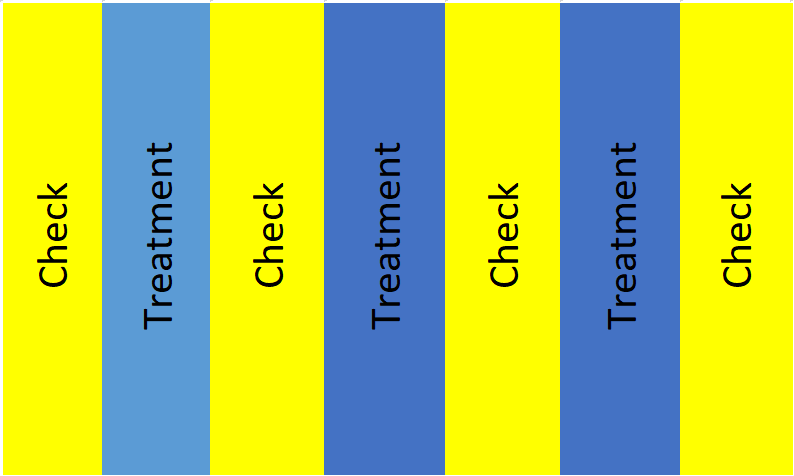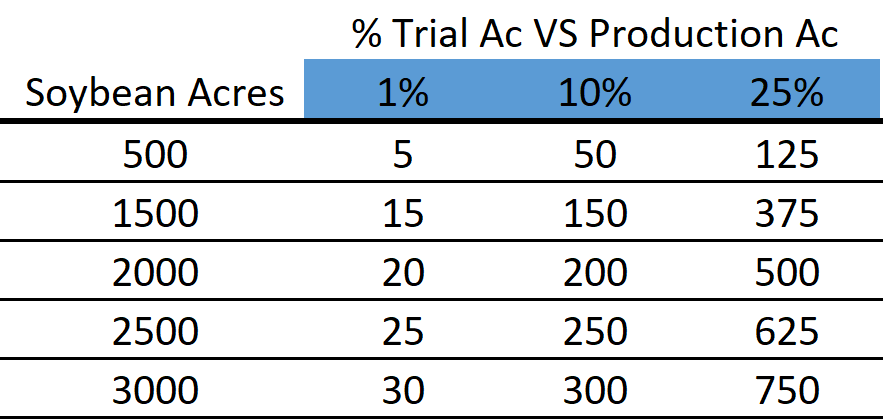In modern production agriculture, research and agronomic trials have expanded beyond small strip trials and university research. Many producers are developing their own highly sophisticated on-farm research studies. Technology has come a long way in helping producers collect data from a yield monitor at harvest and upload that data wirelessly to computer software for processing. Several producers have partnered with CCAs or agronomists to help set up trials and to understand their findings.
Below are some concepts to consider when developing on-farm research trials for the 2020 growing season.
1. What do you want to test?
a. Soybean Variety 1 vs. Soybean Variety 2
b. 160,000 population vs. 120,000 vs. 80,000
c. Early planting vs. Late planting
d. Inoculant seed treatment vs. Standard treatment
e. 30” row spacings vs. 15” row spacings
f. Fungicide application at R4.5 vs. No treatment
g. “Kitchen Sink” applications approach vs. Standard
h. Tissue sampling at growing degree units (GDUs)
2. How will you lay out the study?
a. Splitting the planter across 2,500 acres
b. 500-foot strips replicated 3 times
c. 20 A x 20 A
3. Evaluating Results
a. Did you see biological yield improvement (plants were bigger or greener)?
b. Was there any yield improvement (more bushels)?
c. Could you determine any economic yield improvement or return on investment?
i. Note: Economic Yield Improvement is when the improved bushels at current market values show a 15% return on investment.
d. Are these results seasonal or are they repeatable across large acres?
 Checks
Checks are an untreated sample set that help validate a response from an on-farm trial. Checks can be utilized in any form of agronomic testing and are extremely important when taking soil variability into consideration.
Scale is important when evaluating the size of the trial and its’ ability to match its potential. For example, is the trial looking at 10-acre spots in the field, when the information or management would be implemented across 2,500 acres? This would be less than 0.4% of total acres.

Variables are factors that can alter results and can be specific to a season (rain, temperatures, pest) or regionalized to a field (soil type, drainage, pH, fertility, organic matter, etc.). Make sure all variables are considered when setting up a trial or evaluating the data.
 Checks are an untreated sample set that help validate a response from an on-farm trial. Checks can be utilized in any form of agronomic testing and are extremely important when taking soil variability into consideration.
Checks are an untreated sample set that help validate a response from an on-farm trial. Checks can be utilized in any form of agronomic testing and are extremely important when taking soil variability into consideration.





 and then
and then